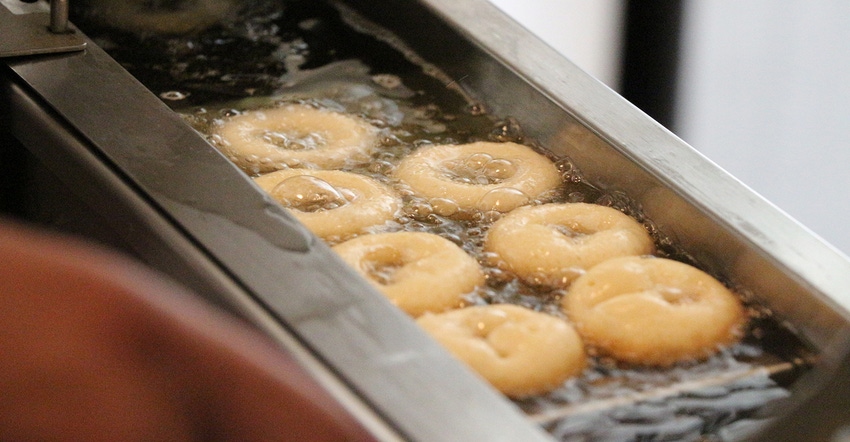October 1, 2017

Sponsored Content
Farming is like any other family business. You make day-to-day decisions on what’s best for your business right now. But you are also focused on the long-term, making decisions that will ensure your business’s viability for the next generation.
Soybean farmers in Delaware, Maryland and Virginia now have a marketing opportunity that fits very well with this business acumen.
High oleic soybeans offer farmers premium opportunities to impact their business now, with long-term customer potential to reach 18 million acres, which would make it the fourth-largest grain and oilseed crop in the United States, behind corn, commodity soybeans and wheat.
Premiums average around 45 cents per bushel, but vary depending on location. It is the premium that attracted Steve Moore, a former soy checkoff farmer-leader from Sudlersville, Maryland.
“There are a lot of benefits to growing high oleic soybeans,” says Moore. “Their yields are very good, and we get paid a premium for them.”
As his success with high oleic soybeans grew, so has his confidence in them.
“Last year was the fourth year I’ve grown them, and I’m going to continue doing so,” he says. “I’ve been very happy with how they have performed.”
Now Moore sees the long-term business potential of high oleic soybeans.
“My local crusher wants all the high oleic soy it can get,” he says. “The market potential is impressive.”
Changes in federal policy and consumer attitudes to trans fats have cost soybean farmers more than 4 billion pounds in soybean demand. But high oleic soybeans have zero trans fats, so it is poised to win back that lost market volume without taking away demand for commodity soybean oil, which still meets the needs of many food and industrial customers.
Today, high oleic soybeans are grown on more than 625,000 acres – primarily in Indiana, Ohio and Michigan, and including areas of Nebraska, Minnesota, Iowa, Illinois, Pennsylvania, New Jersey and the Delmarva Peninsula.
With so many states teaming up with the Delmarva Peninsula to grow soybeans, the food industry is taking notice of high oleic soybeans. New locations are being added every year, and current programs are expanding their offerings.
Though high oleic soybeans are a soft identity preserved (IP) product, Moore was pleased with the grain handling and delivery options.
“High oleic soybeans perform competitively in the field, and come with few additional steps in handling,” says Moore. “But they really set themselves apart thanks to the added benefit of a competitive processor-paid premium.”
“It’s been the right decision for me and my farm,” he adds. “Every truckload adds up, whether by saving on transportation costs, the premium, or high oleic’s ability to perform with my other varieties. This is a simple way for area farmers to increase profitability.”
Farmers can find locations requesting high oleic soybeans and their delivery options at SoyInnovation.com.

INNOVATION BEYOND THE BUSHEL
©2017 United Soybean Board
You May Also Like




